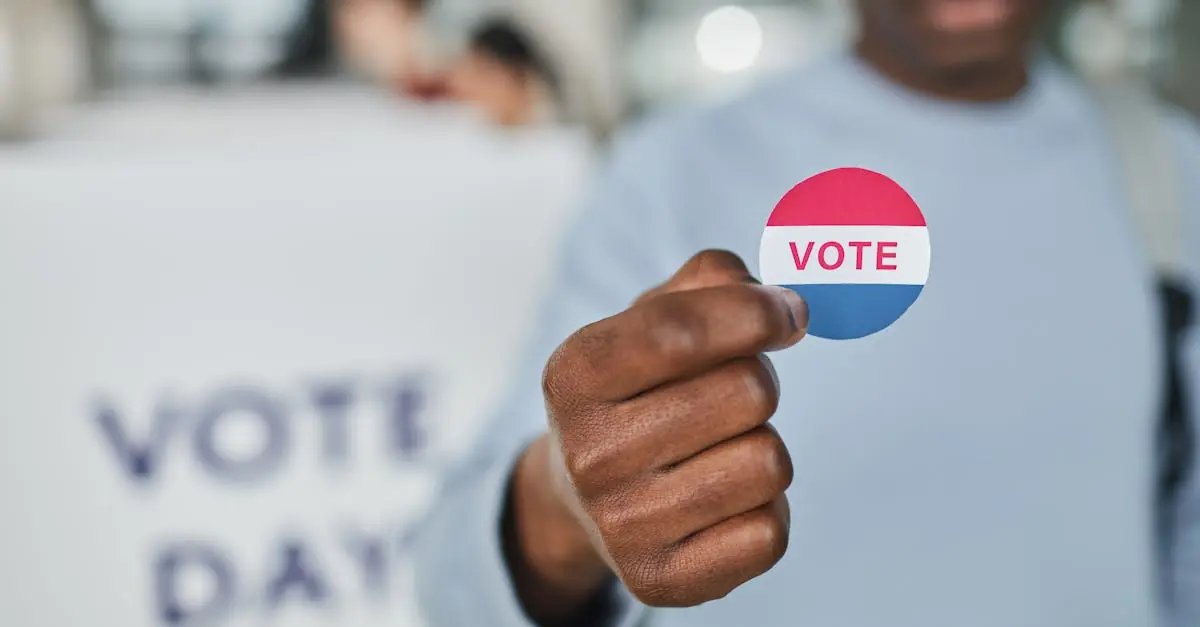Table of Contents
ToggleWhen the government shuts down, it’s like a bad sitcom episode—everyone’s left hanging, and the punchlines just don’t land. Suddenly, the federal machinery grinds to a halt, and the ripple effects are felt far and wide. From delayed services to furloughed workers, the impact can turn everyday life into a chaotic comedy of errors.
But it’s not all doom and gloom. Understanding the nuances of a government shutdown reveals how it affects not just the economy but also the lives of everyday citizens. Whether it’s the parks closing or the uncertainty in federal jobs, the consequences are as varied as they are significant. Dive into the details and discover how this political drama unfolds, and why it matters more than ever.
Understanding Government Shutdowns
Government shutdowns occur when Congress fails to pass budget legislation. These events disrupt funding for numerous federal agencies, resulting in significant ramifications.
Definition of Government Shutdown
A government shutdown signifies a lapse in federal funding, which halts non-essential government services. Essential services, such as national security and public safety, typically continue to operate. Citizens experience delays in various services, including tax refunds and permits. During a shutdown, many federal employees face furloughs, which creates financial strain.
Historical Context
Historical instances of government shutdowns date back to 1980. The longest shutdown occurred from December 2018 to January 2019, lasting 35 days. Events often arise from political disputes over budget allocations or policy issues. Previous shutdowns shed light on the complexity and consequences of these occurrences. Many agencies have developed contingency plans, yet the economic impact remains widespread, influencing businesses and communities alike.
Economic Impact of Government Shutdowns
Government shutdowns trigger significant economic repercussions that ripple through various sectors. Both federal employees and businesses face adverse effects during these periods.
Effects on Federal Employees
Furloughed federal employees experience immediate financial stress as they lose their income. Delayed paychecks create uncertainty in meeting monthly expenses, impacting morale and productivity. Many employees rely on their salaries to manage daily needs, leading to heightened anxiety. While some employees receive back pay after a shutdown ends, the initial disruption still affects their financial planning. Additionally, essential personnel may face increased workloads, leading to burnout while trying to maintain service levels.
Consequences for Businesses
Businesses, especially those contracted by the federal government, suffer revenue losses during shutdowns. Contractually obligated projects often stall, resulting in delayed payments and disrupted supply chains. Many small businesses depend on federal contracts for their survival, with some struggling to pay employees during this period. Moreover, consumer confidence tends to wane as uncertainty grows, affecting overall spending patterns. This decline in consumer activity can slow economic growth long after a shutdown is resolved.
Social Impact of Government Shutdowns
Government shutdowns significantly affect daily life, leading to disruptions in essential services and financial strain for many citizens.
Disruption of Services
Delayed services create a ripple effect, impacting everything from tax refunds to social services. Citizens may experience challenges in obtaining permits or accessing federal assistance programs. Parks and recreational sites often close, limiting public access to these amenities. Additionally, the processing of federal claims gets slowed, causing frustration among those seeking timely responses. Employees in various agencies face uncertainty and increased workloads upon reopening, leading to further complications within the system.
Impact on Vulnerable Populations
Vulnerable populations experience heightened challenges during a shutdown. Low-income families reliant on government assistance programs struggle with delayed benefits, exacerbating existing hardships. Federal employees facing furloughs often live paycheck to paycheck, leading to food insecurity and housing instability. Heightened anxiety affects mental health for those unsure about job status and financial futures. Social services providing critical support for the disabled and elderly may also halt operations, leaving these groups without essential resources.
Political Implications of Government Shutdowns
Government shutdowns create significant political ramifications. The effects extend beyond immediate service interruptions, influencing public trust and legislative dynamics.
Public Perception and Trust
Citizens often view government shutdowns as a failure of political leadership. Trust in government institutions declines during these events, as frustrations mount over halted services. Public sentiment shifts towards skepticism about the government’s ability to function effectively. Survey data shows that approval ratings for political leaders decrease substantially after a shutdown. Increased anxiety over job security and personal finances further exacerbates concerns. Restoration of public trust demands accountability from elected officials during and after such crises.
Legislative Consequences
Legislative gridlock often escalates following a government shutdown. Political parties utilize these shutdowns to underscore ideological differences, complicating future negotiations. Compromise becomes increasingly rare as lawmakers prioritize partisan agendas over collective interests. Past shutdowns led to lasting changes in legislative tactics, including increased use of continuing resolutions. The potential for future shutdowns affects budgetary planning and decision-making processes. Lawmakers may further entrench divisive policies, making bipartisan cooperation even more challenging down the line.
The ramifications of a government shutdown extend far beyond temporary inconveniences. They disrupt essential services and create financial strain for countless individuals and families. Furloughed employees face uncertainty while businesses reliant on government contracts suffer revenue losses and project delays.
Moreover the political landscape becomes more polarized as public trust erodes and approval ratings decline. Such shutdowns not only highlight the fragility of governmental processes but also underscore the need for effective bipartisan cooperation. Understanding these impacts is crucial for citizens as they navigate the complexities of a system that directly affects their lives and livelihoods.




